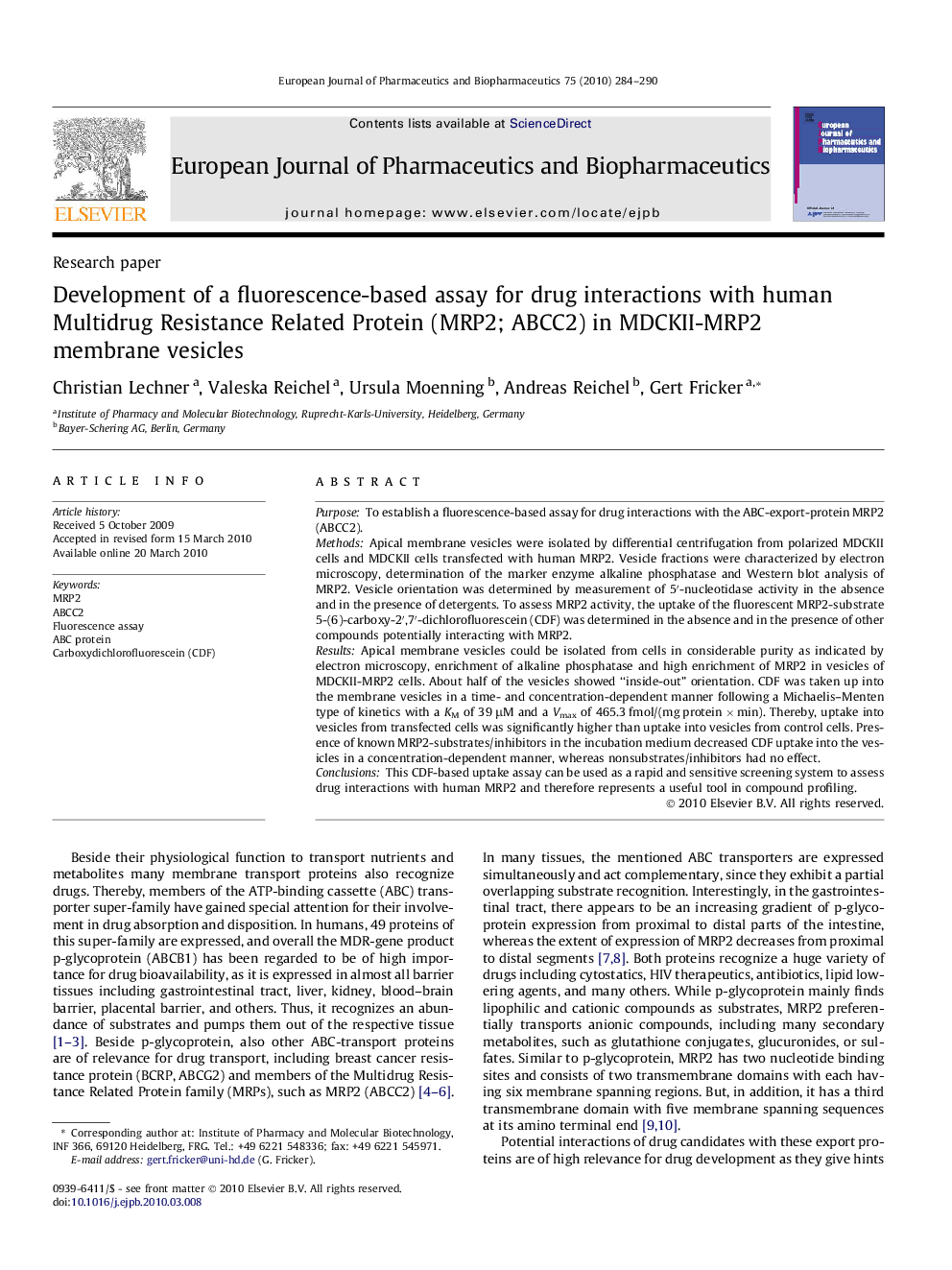| Article ID | Journal | Published Year | Pages | File Type |
|---|---|---|---|---|
| 2085530 | European Journal of Pharmaceutics and Biopharmaceutics | 2010 | 7 Pages |
PurposeTo establish a fluorescence-based assay for drug interactions with the ABC-export-protein MRP2 (ABCC2).MethodsApical membrane vesicles were isolated by differential centrifugation from polarized MDCKII cells and MDCKII cells transfected with human MRP2. Vesicle fractions were characterized by electron microscopy, determination of the marker enzyme alkaline phosphatase and Western blot analysis of MRP2. Vesicle orientation was determined by measurement of 5′-nucleotidase activity in the absence and in the presence of detergents. To assess MRP2 activity, the uptake of the fluorescent MRP2-substrate 5-(6)-carboxy-2′,7′-dichlorofluorescein (CDF) was determined in the absence and in the presence of other compounds potentially interacting with MRP2.ResultsApical membrane vesicles could be isolated from cells in considerable purity as indicated by electron microscopy, enrichment of alkaline phosphatase and high enrichment of MRP2 in vesicles of MDCKII-MRP2 cells. About half of the vesicles showed “inside-out” orientation. CDF was taken up into the membrane vesicles in a time- and concentration-dependent manner following a Michaelis–Menten type of kinetics with a KM of 39 μM and a Vmax of 465.3 fmol/(mg protein × min). Thereby, uptake into vesicles from transfected cells was significantly higher than uptake into vesicles from control cells. Presence of known MRP2-substrates/inhibitors in the incubation medium decreased CDF uptake into the vesicles in a concentration-dependent manner, whereas nonsubstrates/inhibitors had no effect.ConclusionsThis CDF-based uptake assay can be used as a rapid and sensitive screening system to assess drug interactions with human MRP2 and therefore represents a useful tool in compound profiling.
